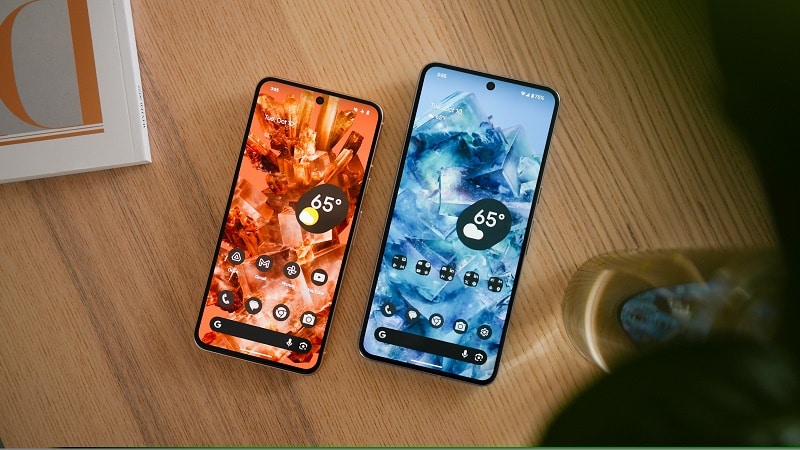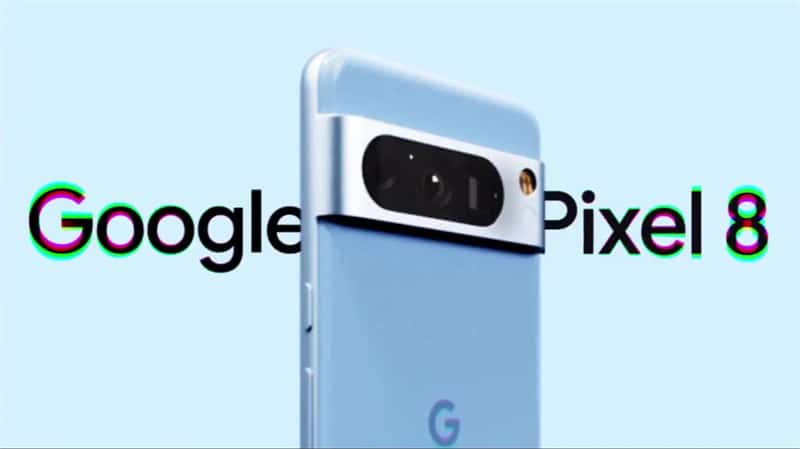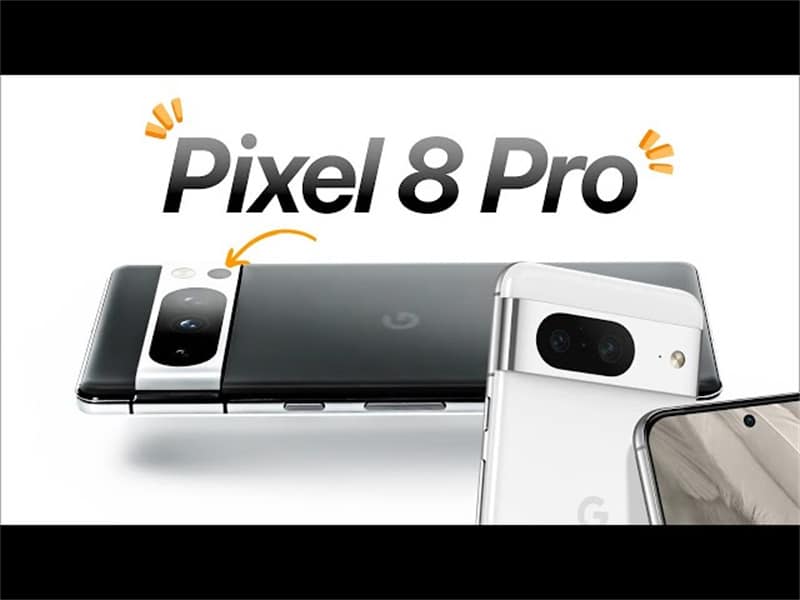
Google has concentrated its present Pixel phone pitch on its cutting-edge features, including its ability to anticipate your needs, automate daily tasks, and how smart it is. The Pixel 6 and 7 fell short of that expectation, even though it feels like the Pixel 8 phones could actually make this pitch a reality.
The Google Pixel 8 series has just come out, and they are currently, in some noticeable ways, superior phones than their predecessors. Furthermore, these devices offer more potential. The thing is, Google is asking you to take them for their word this time round.
Although they cost more, the Pixel 8 and 8 Pro are superior to their predecessors. Product improvement also comes with a $100 price increase as the Pixel 8 is now $699, and the Pixel 8 Pro is going for $999. The basic Pixel was formerly considered an upper-tier midrange phone, but those days are long gone. Now, everyone can agree that the Pixel 8 is a flagship phone.
Google Pixel 8

Today, there is nothing quite like the Google Pixel 8. The just-released Pixel 8 and its AI capabilities provide an early peek into how calling, photography, and even the phone's wallpaper could evolve after using it for about a week. Although these capabilities alone wouldn't make most people go out and buy a Pixel 8 right now, they do demonstrate how AI will continue to be ingrained in your day-to-day routine.
The Google Pixel 8, which starts at $699 (Australian $ 1,106), is, for most people, the perfect phone. Its improved design and cameras make it one of the best non-Pro Google phones. It also has a bright and clear OLED display that maximizes players’ experiences when playing online games at Ozwin casino.
Even if you don’t care for Pixel 8’s AI features, there are many other exciting features to consider.
Google Pixel 8’s key specs
- 8GB RAM, 128/256GB storage, and a Tensor G3 chipset.
- 2″ OLED Actua display (60-120 Hz, 2000 nits peak brightness and max 1400 nits HDR).
- Main camera: 50MP Type 1/1.31 (9.8 x 7.4 mm) Octa PD sensor, F1.68 aperture, 25mm equivalent, OIS, EIS.
- Ultra-wide: 12MP sensor (5.0 x 3.8mm), F2.2 aperture,11mm equivalent, AF.
- Tele: N/A.
- Single-zone laser autofocus sensor detection.
- Flicker and spectral sensor.
- Colors: Hazel, Obsidian, Rose.
Pros
- Great proportions for a bigger phone.
- Assured 7-year OS updates.
- Practical photo editing AI tools.
- Payments can be made with Face Unlock.
Cons
- Tensor G3 still overheats occasionally.
- Despite having the same processor, the Pixel 8 lacks some functionality exclusive to Pro users.
Google Pixel 8 Pro
The $1,000 (Australian $ 1,582) Pixel 8 Pro is well worth the money if you're looking for a high-end Android phone that isn't from Samsung and has an abundance of practical software features with excellent photo quality. This year’s Pro phone is by far the best-designed from Google. Although the Pro line's more rounded body and flat display make it comfortable to handle, the matte glass back does have a slippery feel.
Prior to the release of the Pixel 8 Pro, every Pixel Pro device had a curved edge display, while every base model had a fully flat display. Samsung has taken a similar approach with the S series lineup.
However, Google is eliminating typical complaints from many curved-edge display users by switching to a flat display. Apart from that often annoying problem of unintentionally touching the sides of the screen, customers get a little bit more screen real estate with a flat-screen.
Google Pixel 8 Pro’s key specs

- 12GB RAM, 128GB / 256GB / 512GB / 1TB storage and Tensor G3 chipset.
- 7″ OLED Actua display (1-120 Hz, 2400 nits peak brightness and max 1600 nits HDR)
- Main camera: 50MP Type 1/1.31 (9.8 x 7.4 mm) Octa PD sensor, F1.68 aperture, 25mm equivalent, OIS, EIS
- Ultra-wide: 48MP (6.4 x 4.8mm) Quad PD sensor, F1.95 aperture, 11mm equivalent.
- Tele: 48MP (5.6 x 4.2mm) Quad PD sensor, F2.8 aperture, 112mm equivalent, OIS, EIS
- Multi-zone laser autofocus sensor detection
- Flicker and spectral sensor
- Colors: Porcelain, Obsidian, Bay
Pros
- Cameras have simple manual controls.
- Assured 7-year OS updates.
- Payments can be made with Face Unlock.
- Practical photo editing AI tools.
Cons
- Their temperature sensor is gimmicky.
- Tensor G3 still overheats occasionally.
Final thoughts
It feels as if Google has finally hit the mark with the Pixel 8 and 8 Pro feel releases when it comes to its hardware and software goals, even though it has taken longer than many had anticipated or hoped. Google's Pixel line has advanced significantly since the original model.
For the Pixel line, the Pixel 8 Pro's design alone represents a significant advancement from previous Pros. You can't help but become excited about the type of phone that Google could release in the next seven years.
After this year’s release, tech nerds are waiting to see what can be done with the software to enhance and customize photos in the coming years. For those seeking an Android phone with exceptional photo quality and an abundance of practical software functions, the Pixel 8 Pro is well worth the price.










